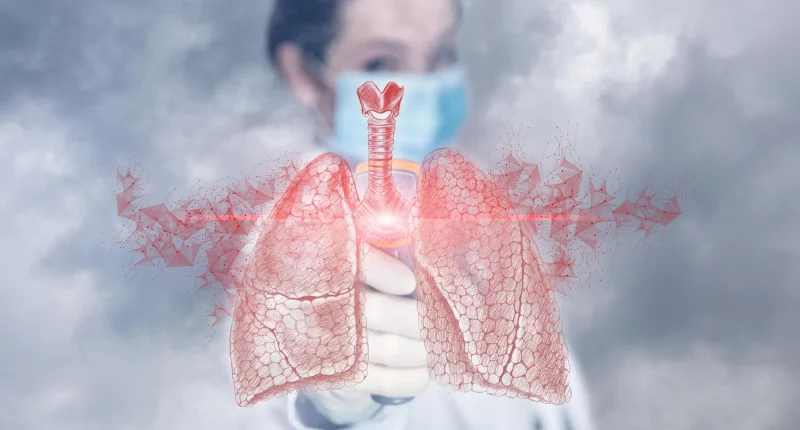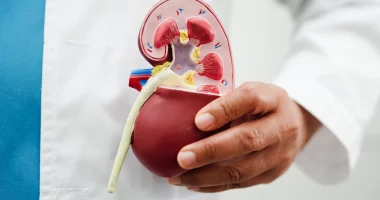Atypical pneumonia is a type of infection in your lungs that is also known as walking pneumonia. This type of pneumonia is generally milder than regular pneumonia.
Doctors figure out how to medicate pneumonia by identifying the germ that is causing the illness.
When you have atypical pneumonia, your symptoms are usually less severe compared to typical pneumonia. There are also things you can do to help prevent getting pneumonia at all.
What is Atypical Pneumonia?
Atypical pneumonia is a type of infection that affects the lower part of your respiratory system, specifically the lungs. The bacteria that cause atypical pneumonia generally result in milder symptoms compared to those causing typical pneumonia.
When Mycoplasma bacteria cause atypical pneumonia, it often comes with additional issues like sinus and ear infections.
Typical vs. Atypical Pneumonia
Pneumonia is a lung infection caused by various germs. It can make you feel very tired and may require several days of rest to recover. In some cases, people might need to go to the hospital for treatment.
Atypical pneumonia, often called walking pneumonia, is a milder form of lung infection. Unlike typical pneumonia, it usually doesn’t require hospitalization, and people with it often don’t feel very sick. They can usually go about their daily activities with little trouble.
Differences in Symptoms
Atypical pneumonia has some unique symptoms that typical pneumonia doesn’t usually have. These include:
- A noticeable headache
- A low-grade fever
- Earache
- Sore throat
While symptoms of atypical pneumonia are generally milder, they last longer compared to the sudden and severe symptoms of typical pneumonia.
Treatment Differences
Atypical pneumonia is treated with different antibiotics than those used for typical pneumonia. This is because typical pneumonia is often caused by a different type of bacteria called Streptococcus pneumonia.
Causes
Atypical pneumonia is mainly caused by three types of bacteria. Mycoplasma pneumoniae typically infects individuals under aged 40 and causes mild symptoms like headaches, earaches, and sore throats. Chlamydophila pneumoniae is commonly found in school-aged children and young grown ups.
Legionella pneumophila, which causes a more severe illness known as Legionnaires’ disease, is often seen in older adults, smokers, and people with weak immune systems. In rare cases, Chlamydophila psittaci can cause atypical pneumonia, usually from contact with infected birds like parakeets, parrots, and poultry.
Is Atypical Pneumonia Transmittable?
Yes, atypical pneumonia is transmittable, but it takes more time for symptoms to show up compared to other common infections like typical pneumonia, the flu, or cold.
Atypical pneumonia transmits through close exposure to an infected person. When someone with the infection sneezes or coughs, tiny droplets containing the bacteria are released into the air and can be inhaled by others. The bacteria can also survive on hands, so if an infected person touches their mouth or rubs their eyes, they can spread the bacteria to surfaces or directly to others through touch.
However, Legionnaires’ disease, a type of atypical pneumonia, spreads differently. It usually occurs when someone breathes in tiny droplets of water that contain the Legionella bacteria, rather than through direct contact with the infected people.
Symptoms of Atypical Pneumonia
The symptoms of atypical pneumonia develop gradually. After being exposed to the infection, it can take 1-4 weeks for symptoms to appear. Once they start, symptoms typically worsen over the coming 2-6 days.
Common symptoms include:
- A continuous cough that can come in fits all the day
- Flu-like symptoms, like chills, fever, or cold sweats
- A dry, itchy or sore throat
- A continuous headache
- Fatigue or weakness
- A pain in the chest while breathing deeply
- Pains and aches and in the joints and muscles
The exact symptoms can vary depending on which bacteria caused the infection. In some cases, a person with atypical pneumonia might also face additional problems, such as ear infections or rashes, especially if they have a weak immune system.
Diagnosis
Atypical pneumonia diagnosis involves some steps.
First, the healthcare provider will ask about your symptoms and how long you’ve had them. They can also ask if you’ve been in contact with anyone who might have the infection.
Next, a physical exam is done. The healthcare provider will check if you have a fever and note your pulse and breathing rate. They will also listen to your breathing with a stethoscope to detect any unusual sounds.
To check the oxygen levels in your blood, the healthcare provider will use a small device known as pulse oximeter that slips onto your finger.
Sometimes, The X-ray of the chest is needed to help distinguish atypical pneumonia from other conditions.
In certain cases, blood tests are important. These tests check your blood count, and kidney function, and identify the kind of bacteria causing the infection. Blood tests are especially useful to determine the outbreak of atypical pneumonia in your area.
Treatment
Maximum cases of atypical pneumonia can be treated effectively. Healthcare providers will recommend antibiotics, as these are only effective against bacterial infections.
To help reduce symptoms like fever, pain, and aches, nonsteroidal anti-inflammatory drugs (NSAIDs) can be used.
Taking plenty of non-caffeinated fluids, like herbal tea and water, is important. These fluids can help loosen mucus and phlegm, making it effortless to cough them up and clear the lungs.
Rest is crucial when fighting an infection. Mental or physical stress can weaken the immune system, making it harder to recover.
Avoid taking over-the-counter cold or cough medicines that suppress a cough. Suppressing a cough can make it harder for the body to get rid of the extra mucus and phlegm.
In severe cases, hospitalization may be necessary. This is more common for people with weak immune systems or chronic conditions like heart disease, lung disease or diabetes.
Individuals diagnosed with Legionnaires’ disease often need hospital care. They will typically receive intravenous antibiotics, fluids, and breathing treatments to maintain adequate oxygen levels.
Prevention
To help prevent atypical pneumonia, it’s important to get regular vaccinations for whooping cough, typical pneumonia, and the flu. These vaccinations can help reduce the risk of infections that might lead to pneumonia.
Additionally, lowering the risk factors that contribute to atypical pneumonia is key. Quitting smoking and maintaining a healthy diet can give strength to your immune system, making it better at fighting off infections.
It’s also wise to avoid close contact with people who have pneumonia. Regular hand-washing is essential to prevent the spread of bacteria that cause the infection.
One of the most significant prevention methods is for anyone who is sick to cover their mouth when coughing or sneezing. This helps stop the germs from spreading to others.
Outlook
In general, maximum cases of atypical pneumonia are easy to treat. People with this type of pneumonia often have milder symptoms compared to typical pneumonia, and the infection might clear up on its own.
However, severe infections might need hospital care. It’s important for anyone experiencing symptoms of atypical pneumonia to consult a doctor. Following the advice and treatment plan provided by medical professionals is the best way to manage and recover from this illness.
Summary
Atypical pneumonia, though contagious, often exhibits milder symptoms and responds well to antibiotics. Diagnosis involves a thorough examination, including questions about symptoms and sometimes chest X-rays. Treatment focuses on antibiotics, rest, and managing symptoms like fever and cough.
Preventive measures include vaccinations, hand hygiene, and avoiding close contact with infected individuals. The outlook is generally positive, with most cases easily treatable, though severe infections may require hospitalization. Following medical advice is crucial for effective management and recovery.









